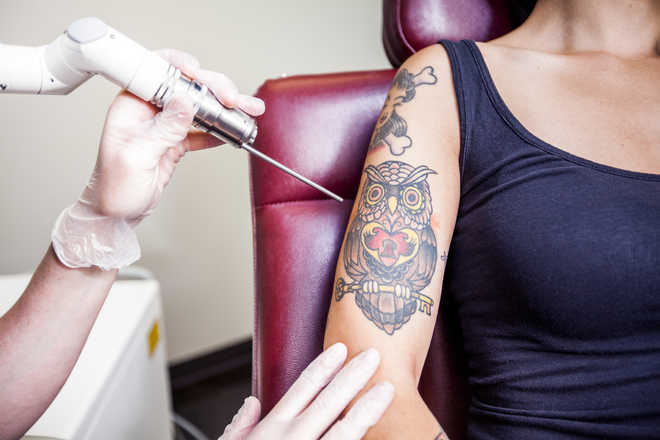Ultrathin electronic tattoos may lead to next-gen wearable devices
Washington, July 5
Scientists have developed highly flexible, ultra thin tattoo-like circuits using an off-the-shelf printer that can adhere to human skin and could power the next generation of wearable devices.
The low-cost process adds trace amounts of an electrically-conductive, liquid metal alloy to tattoo paper that adheres to human skin.
These ultrathin tattoos can be applied easily with water, the same way one would apply a child's decorative tattoo with a damp sponge.
Other tattoo-like electronics either require complex fabrication techniques inside a clean room or lack the material performance required for stretchable digital circuit functionality on skin.
"We use a desktop inkjet printer to print traces of silver nanoparticles on temporary tattoo paper," said Carmel Majidi, an associate professor at Carnegie Mellon University in the US.
"We then coat the particles with a thin layer of gallium indium alloy that increases the electrical conductivity and allows the printed circuit to be more mechanically robust. The tattoos are ultrathin, very stretchable, and inexpensive to produce," said Majidi.
In addition to low-cost processing, these tattoos provide other advantages. Since they have mechanical properties similar to lightweight fabrics, they remain functional under bending, folding, twisting, and strains up to about 30 per cent (which is the typical stretchability of human skin).
They can conform and adhere to highly curved 3D surfaces, like a model of a human brain or a lemon.
Applications for ultrathin, compliant tattoos include epidermal biomonitoring, soft robotics, flexible displays, and 3D-transferable printed electronics. — PTI.










